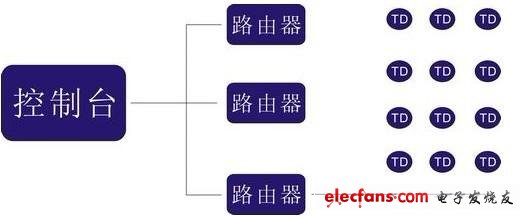CYT recently launched a dimmable color downlight with full digital dimming control, which has received high attention. For this reason, we believe that a new generation of smart home products will gain strong differentiated competitiveness in the later stage of the popularization stage of LED lighting. It can be predicted that the development of LED may need to go through three stages: cultivation stage: popularization stage: differentiation stage. The incubation stage has passed, and the time point should be from 2008 to 2012; the popularization stage takes 2012 as the time point, and it is coming soon. The popularization storm will puzzle various manufacturers at the end of the popularization stage. How do we highlight homogeneity? We believe that Incorporating LED lighting into smart home and smart commercial lighting is a good way out. Dimming and color-adjusting downlights were born based on such a purpose. We integrated the "dimming and color-adjusting" technology into the downlights to give the product more added value. We have conducted an in-depth analysis of LED dimming and toning, that is, this is a product that must highlight the key points: dimming (brightness) and color adjustment (sustainable change in color temperature, 3000K to 6000K), and must have good people Machine interface and bus expansion capability (in order to be included in the common interface of smart home). As a system, the dimming and toning scheme is composed of a "digital controller" and a "controlled dimming and toning downlight group". The first of these is to design a set of transmission protocols to ensure that the user's operation can be finally accepted by the downlight to react. We found in the process that the LED dimming color downlights are different from the current timing protocols such as LED display screens, and their relationship is just like the difference between FTP and UTP. For example, the focus of LED lighting requirements is: user operation is effectively and reliably reflected, which is different from the requirements of large-screen LED display. The signal of LED lighting must first be reliable and try to avoid bit errors as much as possible. The display screen can continue after bit errors and dropped frames; Second, the data stream transmitted by LED lighting is much shorter, because it does not have a large amount of content like a display screen. Therefore, fewer data packets can adapt to a longer transmission distance, and it is also possible to wirelessly (Such as smart home GPRS, WIFI, ZIGBEE, power line transmission, etc.) for transmission control; Third, the data of LED lighting is bursty and allows delay. That is to say, compared with LED point light source landscape lighting and large-screen display, the data transmission of LED lighting is sudden rather than sustainable, and most of the time is idle. Only when the user operates the LED, the controlled lamp needs to react. The allowable delay mentioned here refers to the fact that most users have a delay of hundreds of milliseconds for LED lighting control is acceptable. Fourth, surges need to be suppressed through timing. Therefore, we can use certain software operations (such as sequential delay) to effectively suppress the impact on the power grid when the dimming color downlight group is suddenly turned on and off. Since the timing is so important, we can simply design a timing to explain some of the characteristics of LED dimmable color downlights. For example, in the hardware of the receiving end of the downlight, we can build a single-chip microcomputer, which is used to receive the data packets passed from the transmitter. Led Wall Display,Outdoor Advertising Sign Banner,Advertising Digital Signs Banner,Outdoor Signs Banner ALLIN , https://www.displayapio.com